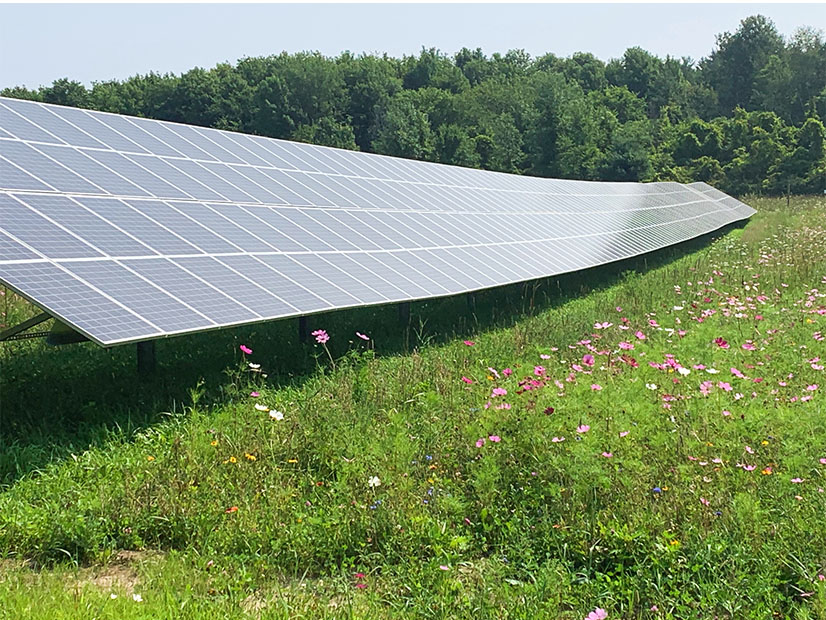
New York’s upcoming annual solicitation for large-scale renewable energy may include a new siting scorecard that would encourage solar developers to build agrivoltaic strategies into their projects.
“Proposals with co-utilization commitments will receive favorable scoring credit, and these commitments will be included in the awarded agreements,” said Jeremy Wyble, senior project manager at the New York State Energy Research and Development Authority (NYSERDA).
The authority wants its expanded Smart Solar Siting Scorecard to “drive change” so that developers site “smarter” projects, Wyble said Tuesday during an American Solar Grazing Association webinar.
Comments on the proposed update to NYSERDA’s 2021 scorecard were due at the end of July, and Wyble said the goal now is to review those comments and include the updated version with the next Tier 1 solicitation for large-scale renewables. Tier 1 projects are designed to help New York’s load-serving entities meet the state’s Renewable Energy Standard requirements and can include solar, wind, geothermal, battery, hydro and geothermal technologies.
While NYSERDA included a simplified scorecard for submissions to last year’s Tier 1 solicitation, the authority used it mainly for informational purposes. This year, however, NYSERDA plans to require developers to submit the expanded 2022 version with their bids. It will “hold more weight” than it did last year, returning an actual score based on 160 total points, according to Jessica Bacher, executive director of the Land Use Law Center at Pace University. Bacher supported the authority’s efforts to update the scorecard.
Of the 160 points, 95 are allocated to agricultural protection, 35 to environmental protection of forested lands, 25 to community benefits and collaboration, and 5 for innovation. Developers would earn points for minimizing land impacts, which then would trigger certain strategies that are either mandatory or optional based on that land-use score.
Optional strategies would carry extra points that developers can earn by including them in their proposals to offset land-use impacts. There would be no points awarded for mandatory strategies.
The bulk of co-utilization strategies on the scorecard are optional because agrivoltaics is a new field, and it’s not “appropriate” yet to mandate them within the new scorecard incentivization structure, Bacher said.
The two mandatory co-utilization strategies on the scorecard are conducting a site survey or engaging landowners or farmers to assess feasibility and land suitability for production of preferred crops or vegetation species; and engaging the farming community to determine feasibility and solicit interest in grazing activities in or around the project.
High-scoring optional strategies include:
-
-
- designing for the land’s current and future farming uses;
- maintaining pollinator habitat, crop production or grazing in long-term project operations; and
- incorporating regenerative farming practices, such as plant cover crops or low tillage, for maximum carbon sequestration.
-
Engagement with the community is a recurring theme in the scorecard, Bacher said.
NYSERDA plans to require developers to complete the scorecard for the upcoming solicitation if they are proposing to build a solar project with a capacity of 20 MW or larger on 100 acres or more.
